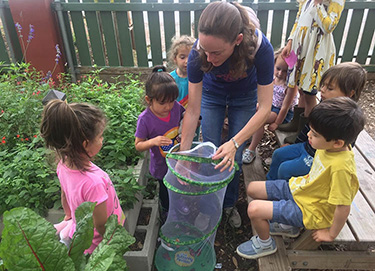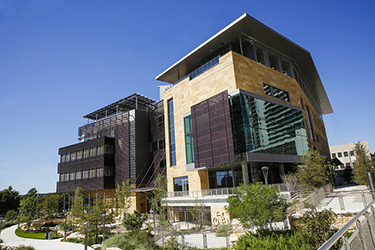Through a very different path, Professor Joseph Renzulli, educational psychologist and distinguished professor in the Neag School of Education at the University of Connecticut, arrived at very similar conclusions as Levin. While many look at IQ and processing speed to determine giftedness, Renzulli proposed a three-ring model that looked at ability, creativity, and task commitment. Based on his model for giftedness and his understanding of child development, he advocated that schools should provide all students with the opportunities needed to develop higher-order thinking skills. He felt that all children can and should pursue more rigorous content. His Schoolwide Enrichment Model or SEM (Renzulli 1985), which supports child-led exploration through enrichment clusters, has been gaining significant popularity in recent years. Laurel Mountain Elementary school in RRISD is one example of a local public school that has adopted the SEM approach.
As one might expect, similar improvements have been taking place in schools outside the United States as well. Levin’s Accelerated Schools have also been established in Hong Kong, for example. It is noteworthy that in Ghana's capital city of Accra, about 80 percent of children are now enrolled in preschool by age 3. More interestingly, the preschools in Accra are in the process of retooling their programs to enhance their children’s learning and development. They are moving away from rote memorization to a curriculum that values open-ended questions, reasoning, and reflection. Very similar fundamental changes are also taking place in the elementary classrooms across China, only on a much grander scale. For example, Adream Foundation has built over 2,700 “Dream Centers” across China to foster curiosity and creativity in their young children. To promote risk taking, the foundation has explicitly prohibited judgment and criticism at these centers.
The large body of research on human abilities (Gardner 1983; Sternberg 1984; Bloom 1985; Renzulli 1986; Reis 1995; Levin 2013) bolsters the claim that the strategies employed in gifted and talented education are essential for general education as well. Given the decades of research and investment, and a lengthy federal report on improving education for the gifted and talented (National Excellence: A Case for Developing America’s Talent; U. S. Department of Education, 1993), is there consensus on what gifted education entails? Please stay tuned as I explore this further in my next blog post (the second of a three-part series) here.
Srinivas Jallepalli
References
Bloom, B. S. (Ed.). (1985). Developing talent in young people. New York, NY: Ballantine Books.
Bloom, H.S., Ham, S., Melton, L., & O’Brient, J. (2001). Evaluating the accelerated schools approach: A look at early implementation and impacts on student achievement in eight elementary schools. New York: Manpower Demonstration Research Corporation.
Gardner, H. (1983). Frames of mind: The theory of multiple intelligences. New York, NY: Basic Books.
Levin, H. (2013) “Acceleration for All,” with Pilar Soler, In J. Hattie & E. Anderman, Eds., International Guide to Student Achievement (New York: Routledge, 2013), 209-211.
Reis, S. M., Gentry, M. L., & Park, S. (1995). Extending the pedagogy of gifted education to all students (Research Monograph 95118). Storrs: University of Connecticut, The National Research Center on the Gifted and Talented.
Renzulli, J. S. (1986). The three-ring conception of giftedness: A developmental model for creative productivity. In R. J. Sternberg & J. E. Davidson (Eds.), Conceptions of giftedness (pp. 53-92). New York, NY: Cambridge University Press.
Renzulli, J. S. (1993). Schools are places for talent development: Applying “gifted education” know-how to total school improvement. Unpublished manuscript. The National Research Center on the Gifted and Talented: The University of Connecticut, Storrs.
Renzulli, J. S. (1994). Schools for talent development: A comprehensive plan for total school improvement. Mansfield Center, CT: Creative Learning Press.
Renzulli, J. S., & Reis, S. M. (1985). The schoolwide enrichment model: A comprehensive plan for educational excellence. Mansfield Center, CT: Creative Learning Press.
Sternberg, R. J. (1984). Toward a triarchic theory of human intelligence. Behavioral and Brain Sciences, 7, 269-287.
U.S. Department of Education, Office of Educational Research and Improvement. (1993). National excellence: A case for developing America’s talent. Washington, DC: U.S. Government Printing Office.





























